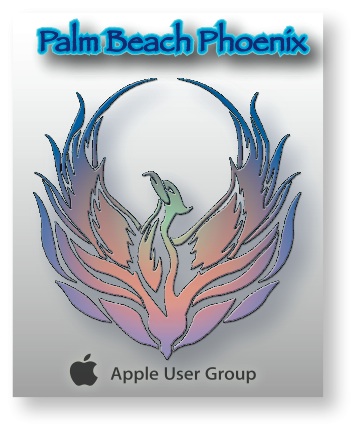Mac Corner: Is it time to trade in your old Mac?
By Larry Grinnell, Palm Beach Phoenix Apple Users Group
 Whew! What a loaded question! The reality is that there are lots and lots of older … er … more mature Macs still in use every day, helping their owners run their businesses.
Whew! What a loaded question! The reality is that there are lots and lots of older … er … more mature Macs still in use every day, helping their owners run their businesses.
One of my longtime friends is still using a slew of Macs dating back to the 1990s, because the software he’s running is still getting the job done, and newer versions are either not available, or will not run at all on the newer hardware or operating systems. His attitude is, “why spend all that money upgrading software and hardware when what I have works, and still keeps my business profitable?”
First, classic Mac applications (MacOS 9 or older) will not run in any fashion on Intel-powered Macs (any Mac built after about 2007). Any G3 through G5-powered Mac, as well as some even older processors like the PowerPC 604 and 604E, can run MacOS 9.2.2 (the last so-called “Classic” Mac operating system), which makes it possible to run most of the older applications that cannot run under the Mac OS X operating system.
In terms of Mac models, this includes the famous PowerMac 7000, 8000, and 9000 families of computers, which, at this point, are virtually being given away, and are among the best pieces of hardware Apple has ever manufactured. I would recommend that in terms of sheer performance and compatibility with newer peripherals (more in a moment), stick with the G3 through G5 Macs. Even with these older apps, the performance improvements over the even older 604-powered Macs will be very noticeable indeed.
The main reason to stick with the G3 through G5 PowerMacs, iMacs, and PowerBooks is compatibility. USB 1.0 ports became available with the first iMacs, and PCI-based USB 1.0 and 2.0 cards can be added to the PowerMac towers. Likewise, you can pick up PCI-based Ethernet cards for faster networking speeds.
The biggie is the external monitor. From the days of the original Macintosh II, Apple used a proprietary monitor connector, which required expensive adapters to be able to use non-Apple monitors on their Macs. Starting with the G3 models, Apple finally adopted the so-called VGA monitor connector—the same one used by millions of PCs.
The only real cautionary note here is that you shouldn’t count on any peripheral made after about the year 1999 being compatible with your Mac. The only exception would be USB mice (as long as they don’t need special software drivers), and basic USB keyboards. That means no scanners, no external hard drives, no newer printers, and so on.
If you plan on using older Macintosh computers, don’t count on getting a lot of support. Apple still has some support information on their website, but is slowly purging some of the oldest information. Apple is not issuing stability fixes, malware vulnerability, or other updates for any operating system older than MacOS 10.4 (Tiger), and that will probably stop when MacOS 10.6 (Snow Leopard) ships later this year.
If you need older peripherals, online sources like MegaMacs (http://www.megamacs.com) offers a wealth of older operating system disks, peripherals, and software to help keep your mature Mac running at peak performance. A quick scan of their website revealed AppleWorks 6.2 for under $30.
This product gives you a really decent word processor, spreadsheet, database, drawing, painting, and presentation package. EBay is also a great source of obsolete computers, peripherals, and software for your mature Mac, as are members of local Apple user groups, who might have some older stuff lying around that they haven’t tossed yet.
People tend to use their older Macs much longer than PC users use their older machines. The main reason is that Apple’s superior hardware is so well designed and well built, it just doesn’t break.
EDITOR'S NOTE: Readers are welcome to comment on this or any Mac Corner columns by visiting the Palm Beach Phoenix blog as well as by writing the editor of Palm Beach Business.com.
Mac Corner runs every Wednesday only in Palm Beach Business.com. Click to read the previous column.
About Larry Grinnell: Larry has been working with Macintosh and Windows PCs for over 25 years and worked as a senior technical writer and IT support professional for a major midwest-based consumer electronics and telecommunications equipment manufacturer here in South Florida. His musings on a wide variety of topics from computers to jazz guitar to strange foreign cars from the 1950s can be viewed at the MyMac.com website. Click here to reach him by email.
 Writers of this column are members of the Palm Beach Phoenix Apple User Group, a nonprofit organization for Apple Computing Device Users, recognized by Apple Inc., with the purpose of providing educational training and coaching to its members (students, professionals and seniors alike) in a cordial social environment. The club meets the second Saturday of each month from 1 to 4 p.m. at the Fire Station #2, 4301 Dixie Highway in West Palm Beach (just two block south of Southern Boulevard). Click here to visit their website. Click here to reach them by email.
Writers of this column are members of the Palm Beach Phoenix Apple User Group, a nonprofit organization for Apple Computing Device Users, recognized by Apple Inc., with the purpose of providing educational training and coaching to its members (students, professionals and seniors alike) in a cordial social environment. The club meets the second Saturday of each month from 1 to 4 p.m. at the Fire Station #2, 4301 Dixie Highway in West Palm Beach (just two block south of Southern Boulevard). Click here to visit their website. Click here to reach them by email.


